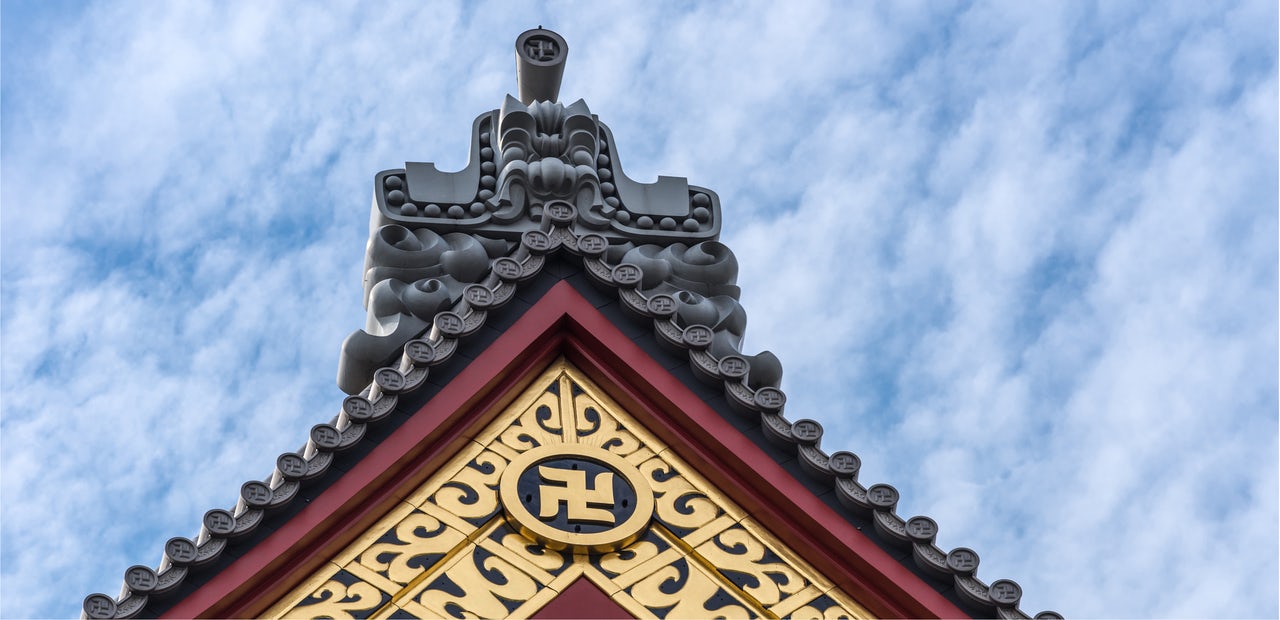JAPAN, January 24, 2019 (The Outline): Around the world, symbols hold disparate meanings based on cultural relevance. For some Westerners, the swastika induces feelings of disgust and remorse; the tacit acknowledgement that we must not let evil consume us again. It may be impossible for those aware of Nazi Germany to ever be able to overcome the symbol’s horrific significance. In Japan, however, as well as other countries with large Jain, Hindu, or Buddhist populations, the symbol still appears on maps and buildings, in its original unflipped form, as a way of designating a variety of positive meanings including good luck, prosperity, and eternity. But in 2016, the Geospatial Information Authority of Japan posed a fairly radical idea: replacing the swastika — or manji, as it’s called in Japanese — with a three-story pagoda, to indicate Buddhist temple locations on non-Japanese and foreign-language maps.
This caused quite a bit of controversy: According to The Japan Times, a Change.org petition was implemented to prevent the modification. Others took to Twitter to air their dismay about the symbol’s removal. The proposed shift would coincide with the 2019 Rugby World Cup and the 2020 Olympics in Tokyo, so as not to offend the onslaught of Western visitors and tourists unaware of its non-Eurocentric and pre-WWII meaning. However, the swastika would continue to appear on Japanese-language maps as well as Buddhist structures, so tourists would still spot the symbol in public spaces. It is unclear what progress has been made to remove the swastika from non-Japanese language maps. But the issue still raises questions about the difficulty of cultural translation. T.K. Nakagaki, a Buddhist priest and interfaith leader in New York, would rather the Japanese government take the time to educate foreigners than dispel the symbol entirely.






